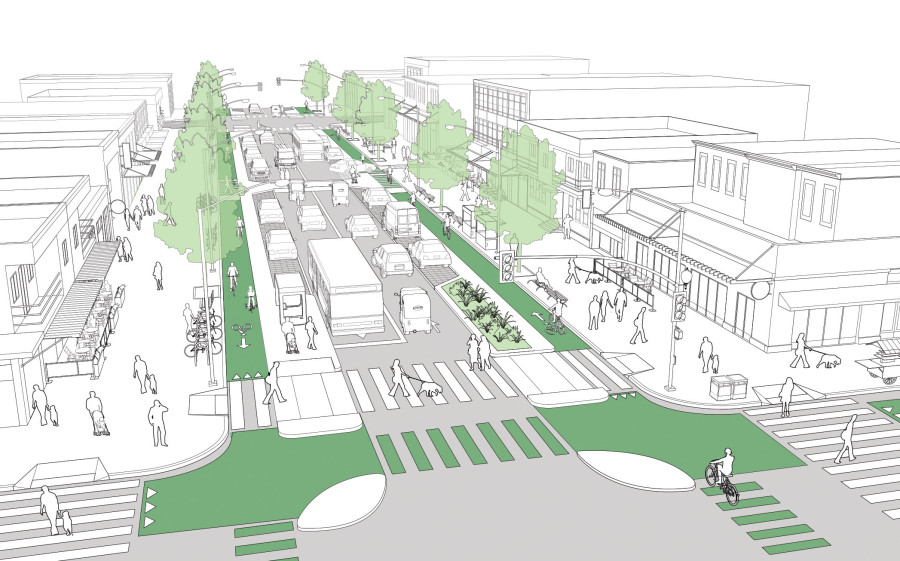Miscellaneous
Pedalling for healthier cities
That Kathmandu’s traffic congestion and air quality is reaching a tipping point is no secret. Successive governments have come and gone; all failing to address the crucial issue of how to make urban transportation safe, convenient and environment-friendly.
Prashanta Khanal & Sagar Onta
That Kathmandu’s traffic congestion and air quality is reaching a tipping point is no secret. Successive governments have come and gone; all failing to address the crucial issue of how to make urban transportation safe, convenient and environment-friendly. Roads have been expanded, homes and public buildings mowed down, and yet Kathmandu’s chronic commuting woes remain, and have only compounded over the years. Even as cities around the world continue to implement innovative policies to rein in their urban transport problems, stuck in a dusty traffic jam in one of Kathmandu’s countless clogged thoroughfares, you can’t help but wonder just why our city seems to be moving backwards in time.
All this comes at a time when in spite of continuous pleas from cycling communities as well as a new generation of transportation engineers, cycling continues to remain on the backburners in urban transport discussion and planning in Nepal. Planners and politicians alike are more interested in costly and populist transport agendas—such as road expansion, flyovers and metros—rather than investing in low-cost and sustainable transport modes that has proven to contribute to economic and social development of cities.
Not surprisingly, as is the case in many issues in Nepal, supportive policies are already in place. From the National Transport Policy (2001) to the National Road Standard (2013), provisions of separate cycle lanes on major urban roads have already been set in motion. However, policy makers and planners have continuously failed to implement the policies and the cycling agenda is never reflected in the government’s annual plans and budget.
The biggest challenge to mainstreaming cycling in the urban transport agenda is the flawed perceptions of the government towards cycling. Cycle lanes are perceived almost as a child’s play; a small issue that does not warrant their attention. There are even people claiming to be experts who oppose the very idea of cycle-friendly cities. However, any open-minded transportation professional who has followed current transportation trends knows that the revival of cycling has transformed even the most auto-centric cities around the world. From New York to Buenos Aires, from Beijing to Singapore, cities after cities have realised that designing the streets for cyclists and pedestrians makes the city more healthy, humane and economically and socially vibrant. Redesigning streets for all users, a concept known as “Complete Street”, breathes life to the street, cleans the air and allows even children and grandparents alike to enjoy our cities.
Old-school engineers and government officials simply fail to realise that building safer cycling facilities is not just about physical infrastructure but it’s about mobility rights of people who are not able to or willing to buy cars or use public transportation. Not all people in cities after all are rich enough to own a private vehicle or even ride a bus.
Automobile dealers, bankers (providing low-interest auto loans), and large infrastructure proponents are clamouring to build wider roads because doing so helps them to become richer. As such, they use their nexus and money to influence political decisions on where the government should invest money on. They often claim that the automobile sector contributes huge amount to government revenue and job opportunities. However, 100 years ago, same argument was made by early automobile inventors and stubborn government barons like Robert Moses in the United States. They built freeways in inner cities and destroyed neighbourhoods so that people living in faraway places could drive to downtowns to work. Now, 100 years later, many cities in US realise that building wider roads in urban core was a flawed decision. They are demolishing urban freeways, building streets for everyone and reconnecting neighborhoods to breathe life back into the cities.
Wider roads encourage more people to drive, which only makes congestion worse, not better—a phenomenon called “induced demand”. It encourages urban sprawl, consuming natural forest and arable land. It worsens air pollution and increases health cost, traffic fatalities and petroleum import cost. The country actually loses more than it gains from automobile dependency. In fact, petroleum fuel and automobiles are the two largest imported items of our country, and contribute to the oft-talked-of trade deficit. A research done in Copenhagen found that each kilometer of car travel costs the society 0.15 Euros. In contrary, the society actually benefits 0.16 Euros for every kilometer cycled, if all costs such as air pollution, congestion, carbon emissions, health costs, noise, road maintenance, among others, are considered. Hence, as responsible transportation professionals, engineers and planners should let Nepalis know about the true cost of road expansion.
Technical solutions to urban transport problems are simple and inexpensive. But the big elephant in the room is the political will and the existing institutional setup. When our institutions and associated planners perceive roads as exclusive space for motor vehicles, it is imperative that we need a fundamental change in our institutional leadership to address the mobility needs of all users and the importance of cycle-friendly cities.
The key agency, Department of Road, was essentially established to build highways connecting cities and towns, which are certainly needed for long-distance travel and to spearhead national development. However, they have imported the same design principle for urban streets where the environment is completely different. In cities, the primary function of a street is not just to connect point A to B, but is itself an economic engine of the city. Conventional engineers and planners, thus, may not be well attuned to the needs of all users and lack the basic understanding of intricacies of designing and constructing “Complete Streets”—streets for all users and not just for motorists. Designing Complete Streets is a complex endeavour, which requires multi-dimensional understanding of its purpose, function and the surrounding land-uses. But the Nepali government builds only one-dimensional urban streets catered for motorists only, which has resulted in current inhumane condition for commuters and pedestrians alike.
The newly elected mayors of different municipalities of Nepal can play a crucial role in transforming their cities. The mayors would be able to decide on the kinds of streets they want in their cities and make a push against the central decisions to build flyovers and road expansion. Terai cities/towns still have a very strong cycling culture—their cycling mode share probably comparable to world’s cycle-friendly cities. These cities now have huge opportunities to preserve their cycling culture and move towards developing sustainable cities. No city has to start from scratch while designing Complete Streets. There are many examples around the world from which we can learn from and adapt to. Global Street Design Guide, a recently published document by NACTO, is one that provides resourceful reference on how we need to redesign our streets to prioritise safety, pedestrians, cyclists and transits. We call upon the new mayors to join the global movement and in so doing, serve all the citizens of Nepal and not just the motorists, as their oath of office states.




 18.24°C Kathmandu
18.24°C Kathmandu











